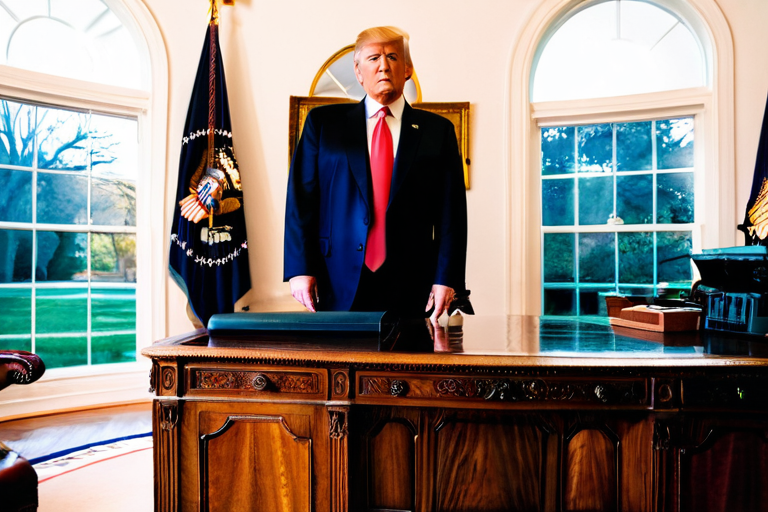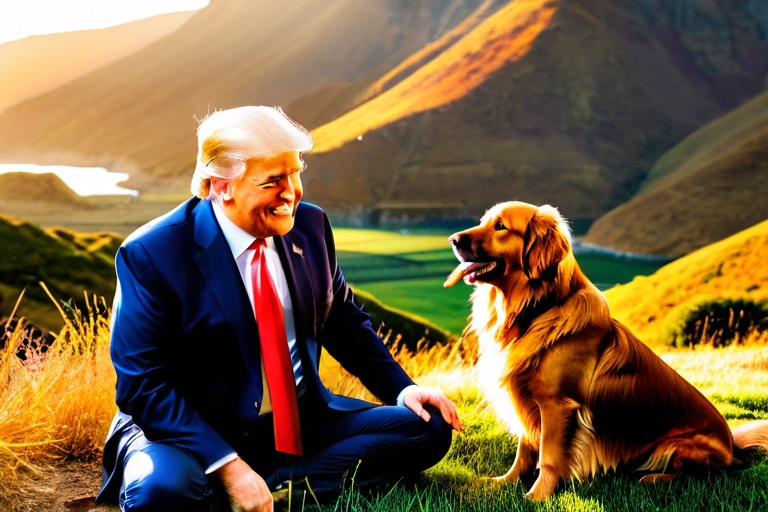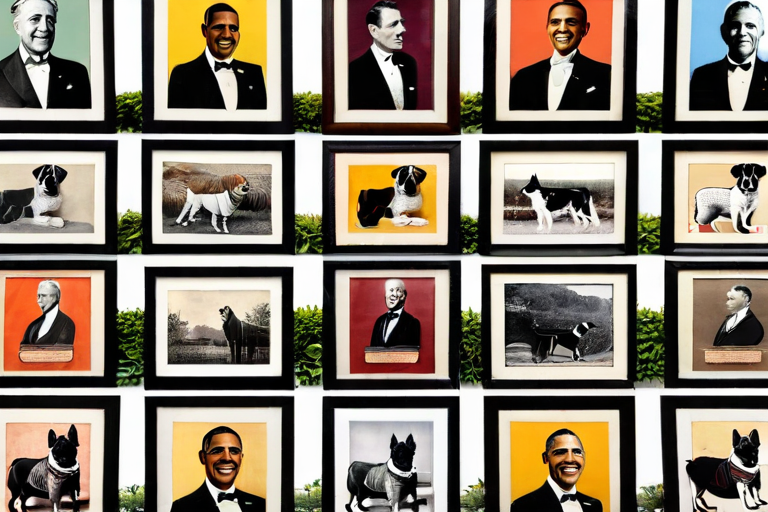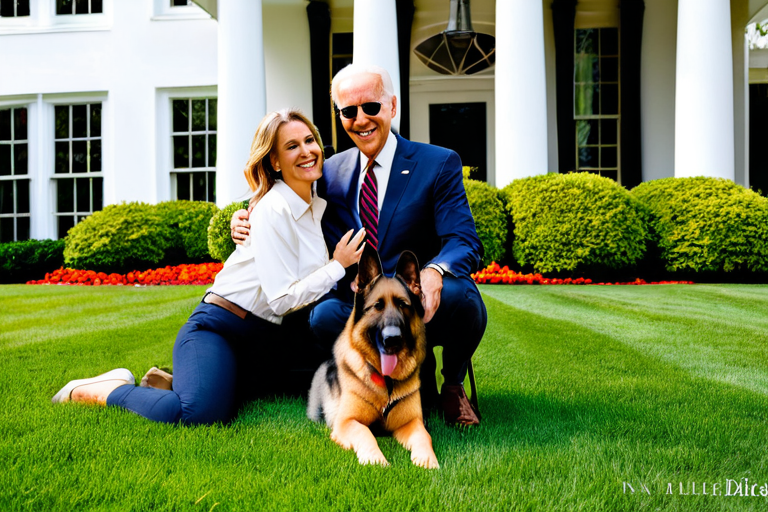The Presidential Pets of Donald Trump: A Look at the White House Without Furry Residents

When Donald Trump entered the White House in 2017, he broke with a tradition that had endured for over a century: for the first time since William McKinley's administration in the late 1890s, the executive mansion would house no presidential pets.
The Historical Context of Presidential Pets
To understand the significance of Trump's pet-free White House, we must first appreciate the rich history of presidential animals. According to the White House Historical Association, the tradition of keeping pets in the executive mansion dates back to George Washington's presidency. The first president maintained a variety of animals at Mount Vernon, including his famous hounds, and this practice continued through nearly every administration that followed.
Theodore Roosevelt's White House was particularly notable for its menagerie, which included not only dogs but also a badger, a bear, and even a hyena. Franklin D. Roosevelt's Scottish Terrier, Fala, became so famous that he had his own press secretary. More recently, the Obama family's Portuguese Water Dogs, Bo and Sunny, became media darlings, regularly appearing in official photographs and even participating in Easter Egg Rolls.
Trump's Personal History with Pets

Contrary to popular perception, Donald Trump has not always been without animal companions. In various interviews and his book The Art of the Deal, Trump has mentioned owning dogs earlier in his life. However, his relationship with pets has been notably different from that of most Americans.
In a 2016 interview with BBC News, Trump stated that he was "too busy" to have a dog in the White House. This practical approach reflects his business-oriented mindset, where efficiency and focus take precedence over traditional comforts.
Trump's children, however, have maintained pets in their personal lives. His son Donald Trump Jr. is an avid hunter and has been photographed with hunting dogs, while his daughter Ivanka has mentioned her family's affection for animals, though they didn't bring pets to Washington during their father's administration.
The Political Implications of a Pet-Free White House
The absence of pets in the Trump White House carried symbolic weight that political analysts have noted. Dr. Katherine Grier, author of Pets in America: A History and professor at the University of Delaware, explains: "Presidential pets have long served as symbolic bridges between the leader and the people. They humanize the president and create common ground with ordinary citizens who also love their animals."
This symbolic function became particularly apparent during the Trump administration. Without the softening presence of family pets, the White House maintained a more strictly business-like atmosphere. Some critics argued this reinforced Trump's image as a transactional leader rather than an empathetic one, while supporters appreciated the focus on policy over symbolism.

Public Reaction and Media Coverage
The media quickly noticed the unusual quiet in the White House grounds. Major outlets like The New York Times and The Washington Post ran features exploring the historical significance of Trump's decision. Animal welfare organizations expressed disappointment, noting that presidential pets often bring attention to animal adoption and welfare issues.
Social media reactions were mixed. Some users created humorous memes imagining what a "Trump dog" might look like or behave, while others expressed genuine sadness at the break with tradition. Pet advocacy groups noted that the absence of White House pets represented a missed opportunity to promote animal welfare on a national platform.
Comparative Analysis with Other World Leaders
Trump's approach to pets stands in stark contrast to many other world leaders. British Prime Ministers have traditionally kept cats at 10 Downing Street, with Larry the Cat serving through multiple administrations. Russian leaders, including Vladimir Putin, have been photographed with various animals, often using these images to project strength and connection to nature.
Even within American politics, Trump's immediate predecessors maintained strong traditions of pet ownership. The Bushes had their Scottish Terrier, Barney, and the Clintons had their cat, Socks, followed by Buddy the Labrador. The contrast highlights how personal lifestyle choices can become part of a leader's public image.

The Practical Considerations
Beyond symbolism, there were practical reasons for Trump's pet-free White House. Security concerns have increased significantly in recent decades, and animals require additional security screening and handling. The Secret Service must account for pets in their protection plans, and animal care requires staff and resources that some administrations might prefer to allocate elsewhere.
Furthermore, the modern presidency involves extensive travel, both domestic and international. Caring for pets during these absences requires reliable staff and systems. For a president who maintained a busy travel schedule and multiple residences, the logistical challenges of pet ownership were not insignificant.
Cultural Significance and Changing Norms
Trump's decision reflects broader cultural shifts in American society. While pet ownership remains extremely popular—according to the American Pet Products Association, nearly 70% of U.S. households own pets—attitudes toward the role of pets in public life are evolving.
Some political commentators argue that the expectation of presidential pet ownership represents an outdated form of political theater. Others maintain that these traditions serve important symbolic functions in a democracy, helping to bridge the gap between leaders and citizens.
The Future of Presidential Pets
With the Biden administration restoring the tradition of White House pets with their German Shepherd, Commander, and cat, Willow, the question remains whether Trump's pet-free approach represents a temporary deviation or the beginning of a new trend.
Political historians will likely debate this question for years to come. What's clear is that the presence or absence of pets in the White House tells us something important about how a president views their role and their relationship with the American people.

Conclusion: More Than Just Animals
The story of Donald Trump's White House without pets is about more than just the absence of dogs or cats. It's a reflection of changing political norms, different leadership styles, and evolving relationships between public figures and their constituents.
While some mourn the loss of this particular tradition, others see it as part of a broader rethinking of what the presidency should be in the 21st century. Whether future administrations follow Trump's example or return to the pet-friendly traditions of the past remains to be seen, but the discussion itself reveals much about American political culture.
This examination of presidential pets and their significance in American political life provides insight into how personal choices become part of our national narrative, shaping how we perceive our leaders and their connection to the people they serve.